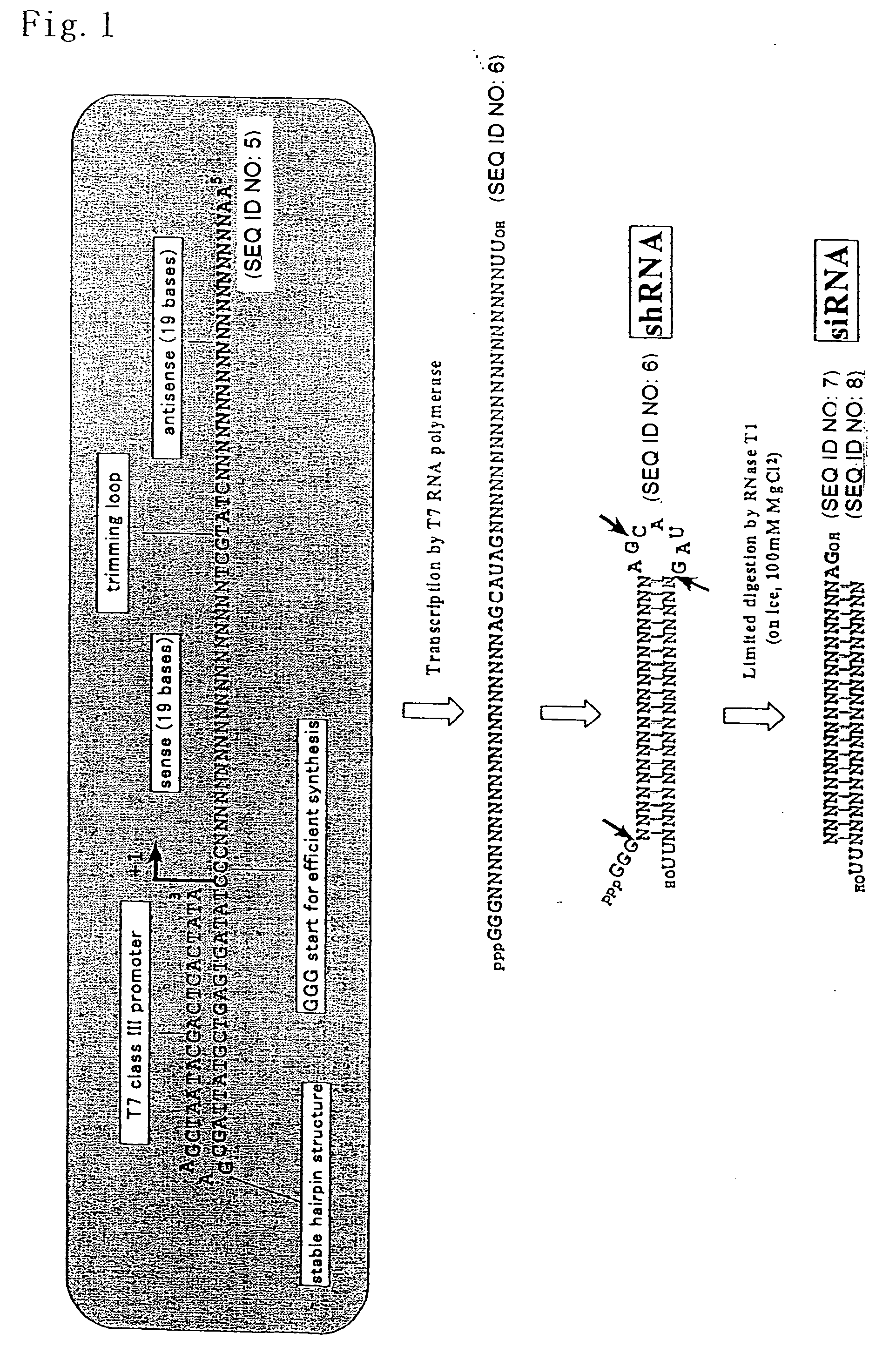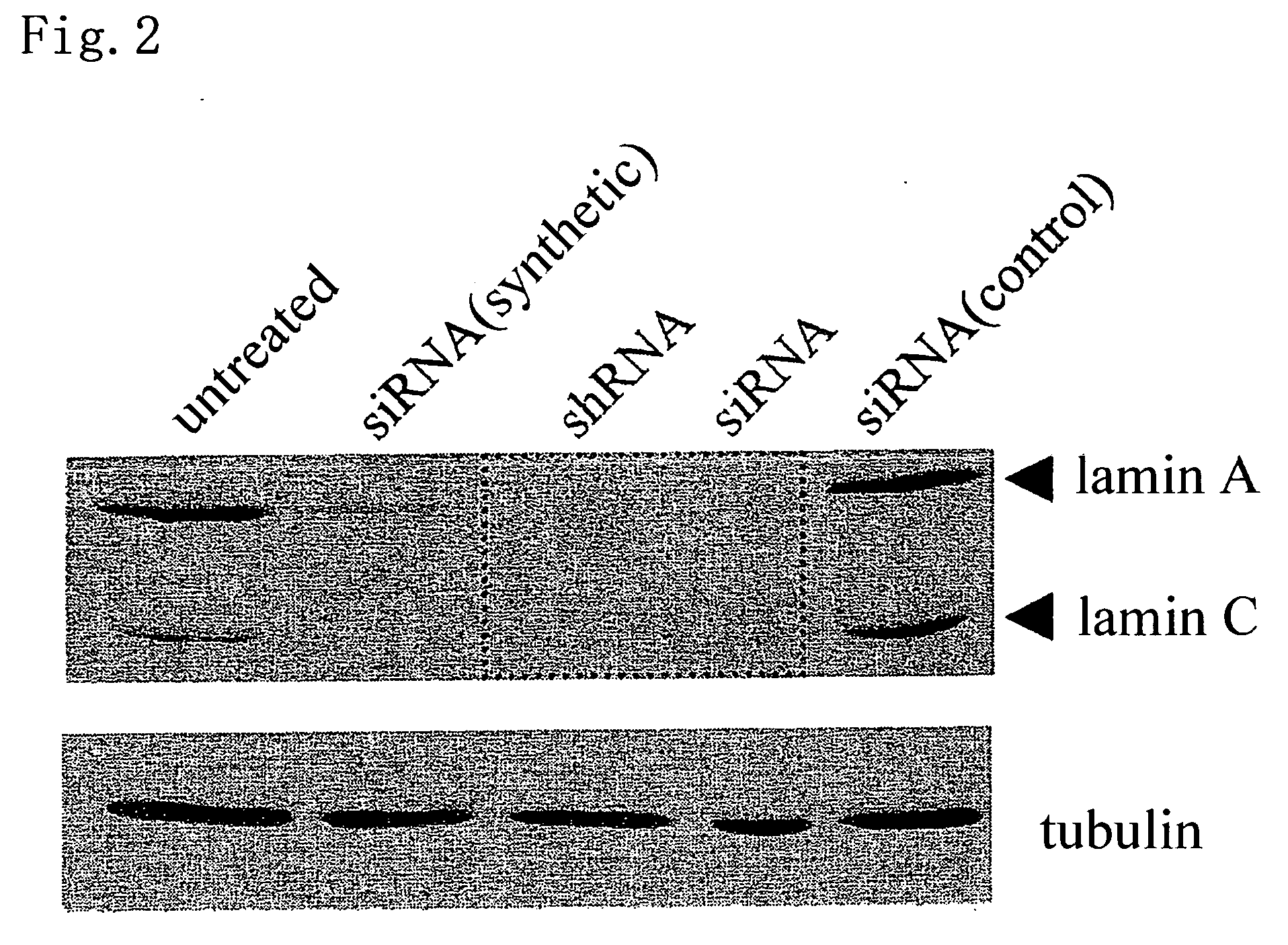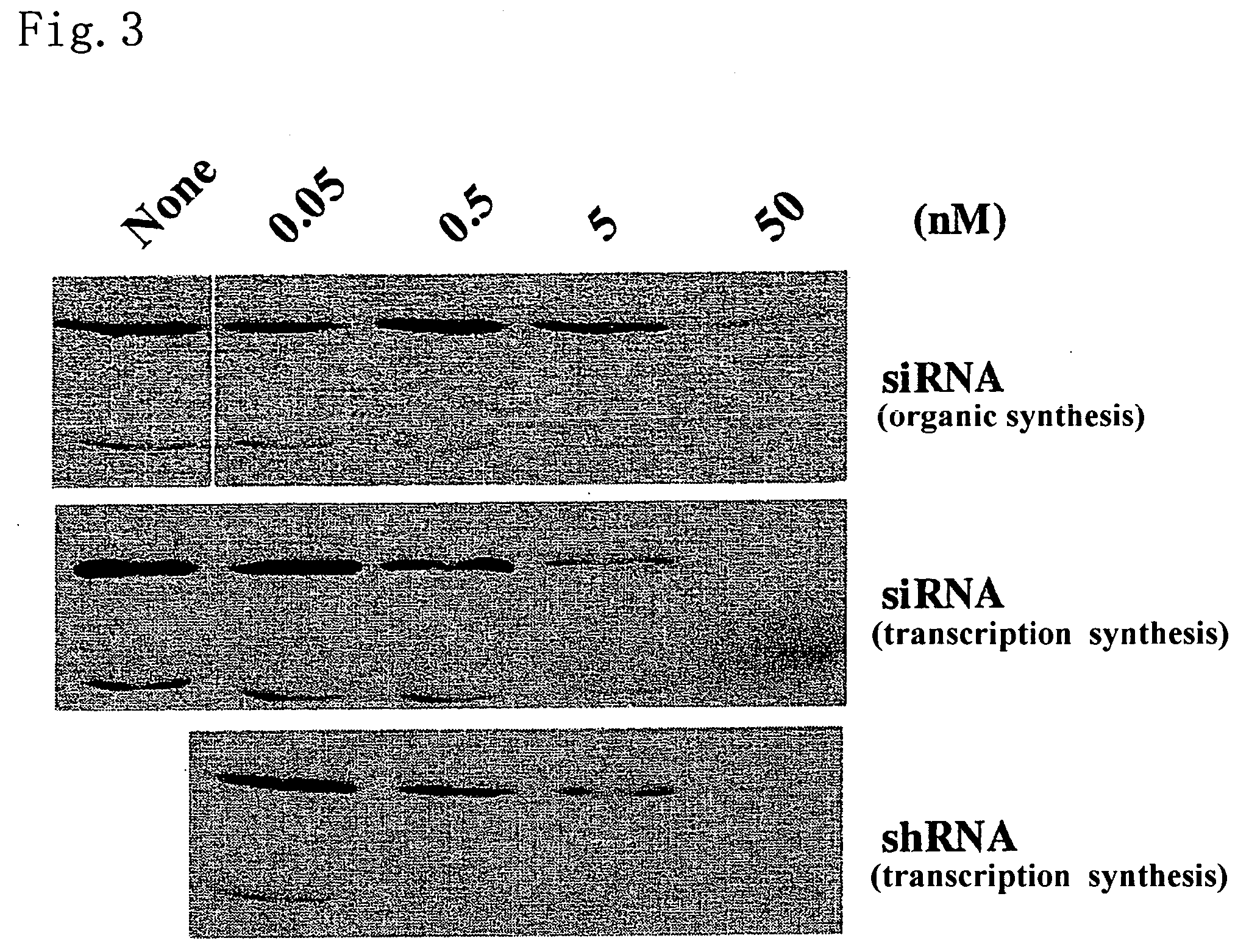Process for producing sirna
a technology of sirna and sirna, which is applied in the field of sirna production, can solve the problems of long time for synthesis, fundamental problems in the application of rnai to mammalian cells, and cannot meet the requirements of a comprehensive and rapid approach in the post-genome era, and achieves a simple and inexpensive method of transcription.
- Summary
- Abstract
- Description
- Claims
- Application Information
AI Technical Summary
Benefits of technology
Problems solved by technology
Method used
Image
Examples
examples
[1] Purpose
[0059] The activities of siRNA and shRNA produced by the method of the present invention are confirmed by knockdown of a lamin A / C protein. Moreover, a comparison among the above activities and the activity of organically synthesized siRNA is also made.
[2] Experimental Method
Design of Template DNA
[0060] DNA used as a template in synthesis of shRNA by transcription was produced by organic synthesis according to the phosphoamidite method (Hokkaido System Science Co., Ltd.). The length of template DNA was 91 bases, and such template DNA was directly used in the form of a single strand. The sequence thereof is 5′-AAC TGG ACT TCC AGA AGA ACA CTA TGC TTG TTC TTC TGG AAG TCC AGC CCT ATA GTG AGT CGT ATT AGC GAA GCT AAT ACG ACT CAC TAT A-3′ (SEQ ID NO: 1). The sequence of this template DNA was designed such that the T7 RNA polymerase promoter region (5′-TAA TAC GAC TCA CTA TA-3′) (SEQ ID NO: 2) was complementarily located at two sites on the 3′-terminal side, and such that ...
PUM
| Property | Measurement | Unit |
|---|---|---|
| concentration | aaaaa | aaaaa |
| concentration | aaaaa | aaaaa |
| concentration | aaaaa | aaaaa |
Abstract
Description
Claims
Application Information
 Login to View More
Login to View More - R&D
- Intellectual Property
- Life Sciences
- Materials
- Tech Scout
- Unparalleled Data Quality
- Higher Quality Content
- 60% Fewer Hallucinations
Browse by: Latest US Patents, China's latest patents, Technical Efficacy Thesaurus, Application Domain, Technology Topic, Popular Technical Reports.
© 2025 PatSnap. All rights reserved.Legal|Privacy policy|Modern Slavery Act Transparency Statement|Sitemap|About US| Contact US: help@patsnap.com



